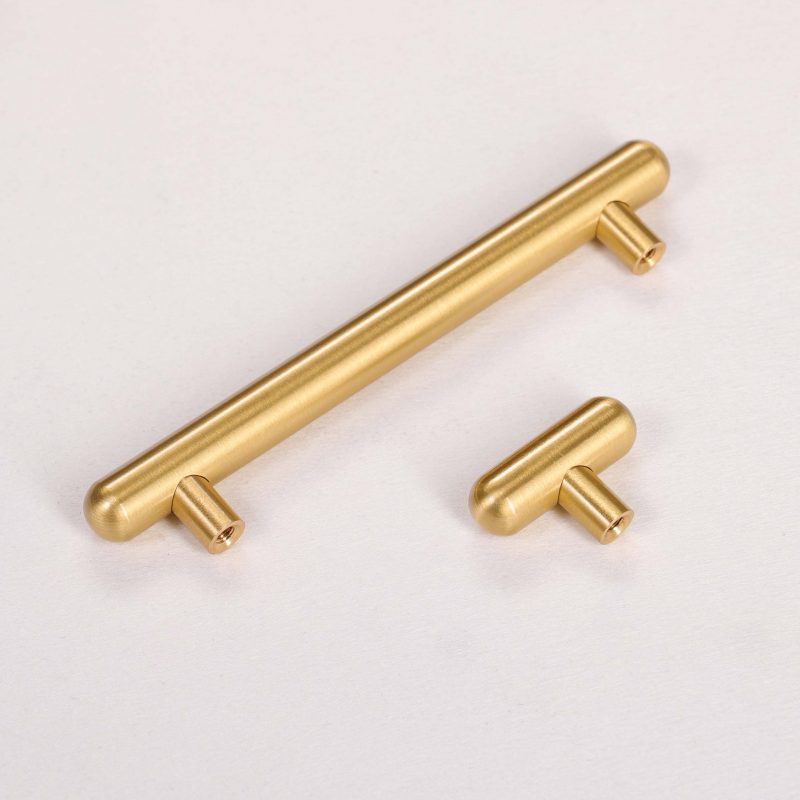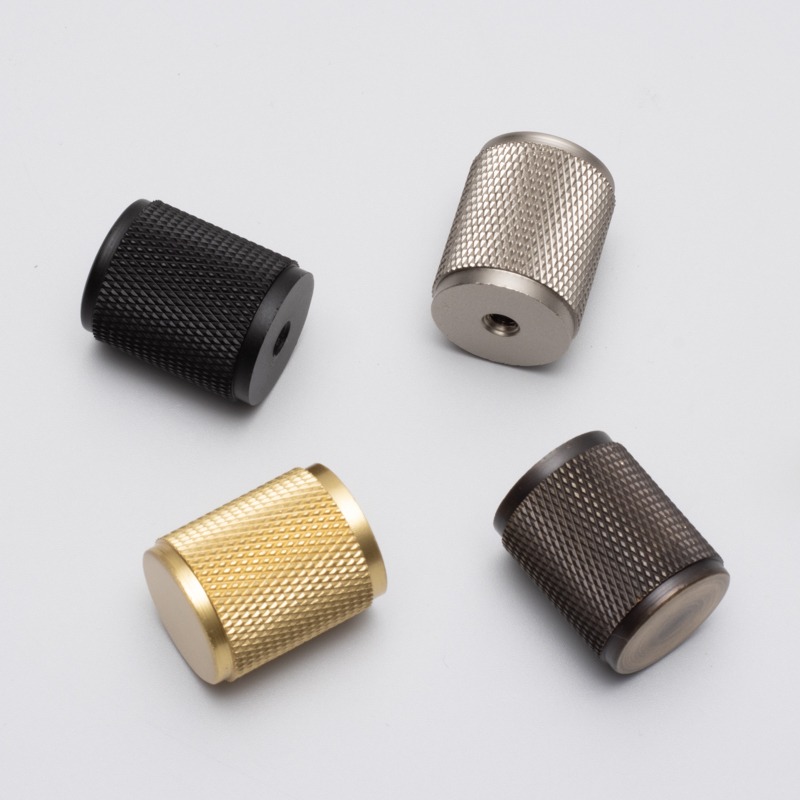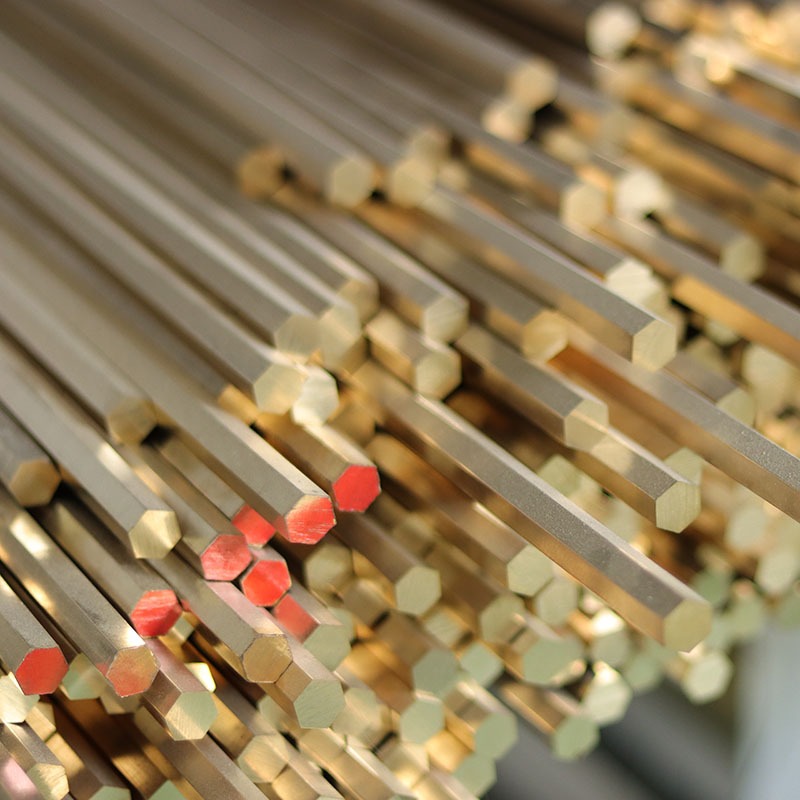Our brass cabinet hardware contains very low levels of lead (between 1 and 3%). This small tolerance — considered safe by industry standards — softens the material ever so slightly, allowing for it to be machined into beautiful designs. Lead is not absorbed through the skin, but can only be absorbed if it is inhaled or ingested — neither of which is possible when the material is in its solid form.
Our brass pulls are absolutely safe, so use them with confidence
The toxicity of brass is something that has been debated for many years. Some people believe that it is dangerous, while others believe that it is not. The doubt is still there if brass is safe to handle or not. However, there are some things that we do know about metal. In this article, we will take a look at the toxicity of brass and the dangers that it poses.
What is brass?
Brass is an alloy of copper and zinc and is a very versatile material. It has a warm, golden color and is easy to work with. It is often used in decorative applications such as lighting fixtures, furniture, and plumbing fixtures. It is also used in musical instruments, ammunition, and electronics.

Brass is a popular choice for jewelry and other metal items, such as coins and medals. It is also used in many industrial applications, such as gears and valves. Brass has a good strength-to-weight ratio and good corrosion resistance, so it is often used in marine and chemical environments. It also has good electrical and thermal conductivity, so it is used in electrical and electronic components. Brass is a great choice for many projects and applications, due to its low cost, attractive appearance, and versatility.
Toxicity of Brass
Brass is an alloy of copper and zinc. It is used in many household items and is also a component of many musical instruments. While it is not as toxic as some other metals, it can still pose a health risk if it is inhaled or ingested. The main health concern with brass is that it can release zinc oxide fumes when heated.
These fumes can cause irritation to the lungs and throat. Inhaling large amounts of zinc oxide fumes can lead to metal fume fever, which is a condition that causes flu-like symptoms. Ingesting small pieces of brass can also be harmful. Brass is not considered to be poisonous, but it can still cause stomach upset and vomiting.
Swallowing large pieces of the brass could block the intestines and require surgery to remove them. If you suspect that you or someone else has been exposed to brass fumes or has ingested brass, it is important to seek medical attention immediately.
Risks of Brass
When it comes to the risks of brass, there is no doubt that this metal can be dangerous. Brass is an alloy of copper and zinc, and when these two metals come into contact with each other, they can create a toxic chemical called zinc oxide. This substance can cause a number of health problems, including respiratory problems, skin irritation, and even cancer.
Exposure to zinc oxide can occur in a number of ways. For example, if you are working with brass objects or materials that contain brass, you could be at risk for inhaling the toxic fumes that are released when the metal is heated. Additionally, if you come into contact with brass that has been contaminated with zinc oxide, you could experience skin irritation or other health problems.
If you think you may have been exposed to zinc oxide, it is important to seek medical attention immediately. Exposure to this substance can be extremely dangerous, and it is important to get the help you need as soon as possible.
Safety Precautions when Working with Brass
When working with brass, it is important to remember to take safety precautions. Brass is a metal alloy consisting of copper and zinc, and is often used in applications such as plumbing, electrical components, and musical instruments. Brass can be hazardous to work with, as it can cause skin irritation, respiratory problems, and even fires if not handled properly.
When working with brass, it is important to wear protective clothing such as gloves, goggles, and a dust mask. This will help protect your skin and eyes from any particles that may be released while cutting, drilling, or sanding brass. It is also important to have proper ventilation in the area where you are working to ensure that harmful particles do not become trapped in the air.
When cutting or drilling brass, it is important to use a sharp, high-quality tool in order to reduce the amount of heat generated. This will help reduce the risk of sparks and fires. Additionally, it is important to keep the work area clean and free of debris in order to reduce the risk of fires.
When welding brass, it is essential to use the proper welding equipment and techniques, as welders are exposed to very high temperatures. It is important to wear a welding helmet, protective clothing, and gloves to protect yourself from the intense heat of welding. Additionally, it is important to be aware of any potential fire hazards when welding and to ensure that the area is properly ventilated.
By following these safety precautions when working with brass, you can greatly reduce the risk of injury and fires. Additionally, you can help ensure that your work is of the highest quality.
Conclusion
In conclusion, it is important to remember that the toxicity of brass is something that should not be taken lightly. The metal can pose serious health risks if it is not handled properly. It is important to be aware of if brass is safe to handle or not and to take precautions to avoid exposure to the metal.






